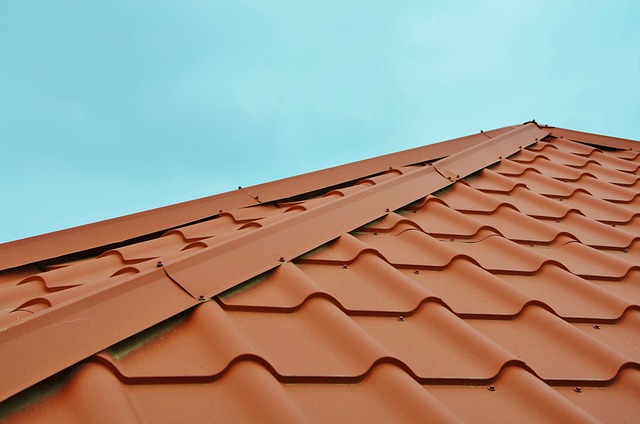Your roof is one of the most critical components of your home. It provides shelter, protection, and insulation, keeping you and your belongings safe from the elements. Over time, however, even the most well-constructed roofs can deteriorate due to exposure to weather, wear and tear, and other factors. This comprehensive guide explores common warning signs that indicate you may need a new roof, what causes these issues, and the steps to take for roof replacement and maintenance.
Roof Leaks
Roof leaks can result from various factors, including damaged shingles, cracked flashing, clogged gutters, or poor sealing around roof penetrations (such as chimneys or vents). Water can seep through any vulnerable point in your roof’s structure, leading to leaks. For this reason, consider a metal roof that is resistant to leaks and offers long-term durability. Explore the internet to find out more about the advantages of metal roofs and how much they cost. Investing in a quality roofing solution can save you from the headache of dealing with roof leaks in the future.
Flashing around chimneys, vents, and other penetrations can deteriorate, leading to leaks. Blocked gutters can lead to water overflow, causing leaks. Over time, the roofing material may degrade, making the roof more susceptible to leaks. Ignoring roof leaks can lead to structural damage, insulation problems, and mold growth. Prolonged exposure to water can weaken the roof’s supporting structure and create a costly repair situation. Addressing leaks promptly is crucial to protect your home’s integrity.
Clogged Gutters
When functioning correctly, gutters prevent water from pooling on the roof or infiltrating the building. Gutters can become clogged due to:
- Debris Buildup: Leaves, branches, and other debris accumulate in the gutters over time.
- Bird Nests: Birds may build nests in gutters, exacerbating the problem.
- Lack of Maintenance: Failure to regularly clean and maintain gutters.
The weight of debris in gutters can cause them to detach from the roofline. Addressing this issue is crucial to prevent water-related problems.
Missing or Damaged Shingles
Shingles are the individual overlapping elements that make up your roof’s outer layer. They are available in various materials, including asphalt, wood, metal, and slate. Several factors can cause shingles to go missing or become damaged. Strong winds can lift or tear shingles. Shingles naturally deteriorate with age and exposure to the elements. Hailstorms can cause dents and punctures in shingles. Incorrect installation can lead to shingle problems. Water infiltration can damage your home’s interior, insulation, and even the supporting structure of the roof. Addressing this issue promptly is essential to prevent more significant problems.
Damaged Flashing
Flashing is a material, usually made of metal, used to seal and protect roof transitions and penetrations, such as around chimneys, vents, skylights, and roof edges. Its purpose is to prevent water from infiltrating the roof structure. Damaged or improperly sealed flashing can allow water to enter the roof structure, leading to leaks and water damage in your home’s interior. It’s essential to maintain flashing to preserve your roof’s integrity.

Sagging Roof and Poor Ventilation
A sagging roof can result from various factors, including inadequate structural support, water damage, or the accumulation of heavy snow or debris. Roof sagging is a severe issue that requires immediate attention. Prolonged water infiltration can weaken the roof’s supporting structure. In some cases, the original roof construction may have lacked proper support. The accumulation of heavy snow, debris, or additional roofing layers can strain the roof structure. A sagging roof poses a significant risk to your home’s structural integrity. It can lead to further structural damage, including compromised walls and ceilings. Addressing this issue promptly is critical.
Proper roof ventilation is crucial for maintaining consistent indoor temperatures, reducing energy costs, and preventing moisture buildup in the attic. Poor ventilation can lead to increased heating and cooling costs. If your attic becomes extremely hot, it may indicate inadequate ventilation. Inadequate ventilation can result in higher energy bills, reduced roof lifespan, and potential structural damage. Addressing ventilation issues can improve your home’s energy efficiency.
Mold or Algae Growth
Mold and algae can develop on roofs in damp or shaded environments. They can spread quickly and create unsightly discolorations on the roof’s surface. Regions with high humidity provide favorable conditions for mold and algae. Failure to clean and maintain the roof allows growth to increase. Mold or algae growth on the roof can damage shingles, wood rot, and the deterioration of the roof’s protective surface. It’s not just an aesthetic concern; it can impact your roof’s functionality and lifespan.
Recognizing the signs of missing or damaged shingles, roof leaks, clogged gutters, damaged flashing, a sagging roof, mold or algae growth, and poor ventilation is essential to maintaining your roof’s integrity. Investing in the care and maintenance of your roof is an investment in the longevity and protection of your home. Don’t wait until problems become unmanageable; take action to safeguard your home from the top down.
